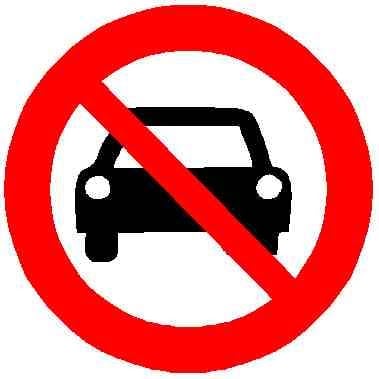I think most old European cities have stores and people living above the store. Houses are way to expensive to not use them, and lots of small stores don’t need 2 stories.
North american cities had these too, many even had public transit street cars (basically a tram) running down the streets. Then the street cars were ripped out in favor of buses and cars then most of the buildings destroyed so people could park their cars, which everyone had now because the transit was demolished.
I’m actually jealous of Bob. He has a wife that he loves, 3 kids that he loves, a rival across the street that easy to hate, because he went to the Jan 6th riot, another rival in the food inspector who’s just mad at him because Bob stole his girl. He owns his own business doing what he loves, and has 2 close friends that visit him near daily.
Sure his finances aren’t the best, and his resteraunt is struggling, but he’s living his dream!
On top of that, he has sworn allegience from a biker gang. Plus Marshmellow loves him, and Marshmellow is awesome!
It’s a little worrying that he has full delusional conversations with food and cooking tools though. That may be something he should see a therapist about. But hey, nobodys perfect.
No more Chad, is now Bob.
also, he only has to spend like 30 seconds a day commuting to work.
I never even thought of that.
You forgot one of the most important things, he loves his job and wouldn’t change it for the world.
P.S. Is anybody else disappointed by the new Marshmallow voice actress?
He owns his own business doing what he loves,
No I didn’t.
And yes, I am disappointed, but I always am with roles that get replaced.
Sorry, my bad :p
Hmmm just got back from lunch at a brew pub that had condos above it.
But did the owner live there?
Japan has a lot of these.
I am passionate about this subject even if I don’t belong in this community.
Zoning is important. It’s what prevents a nuclear power plan next to your house.
The isn’t is that they don’t allow multi-use zoning. There’s very little reason you can’t have commercial below residential.
Zoning is important. It’s what prevents a nuclear power plan next to your house.
When looking at the Netherlands, you can both have a store at a house, AND a nuclear power plant that’s not built right next to a village (it’ll be a small kilometre away, since my country is rather densely populated).
I see mixed-use zones in most of the towns in NJ, where a chunk of the work I do is in land use. I am assuming it must be different outside of NJ, because this is certainly not the first time I’ve heard this criticism of zoning.
Like yes, zoning is used for a whole bunch of bullshit, but the second you get anywhere even remotely urban this is extremely common. This sounds like it’s from someone who grew up in suburbia hell and really just wants to move into a city but doesn’t know that.
A big part of the problem is in North America, they won’t build that type of development anymore. New developments are almost exclusively either residential SFH or commercial strip malls. Prevously a building was flexible enough to go from a grocer with apartments above it then to a financial office then to full residential with relatively minor renovations in between. Now walmart has rules saying another big box store cant buy their abandoned big box store to prevent competition.
I live in Jersey, and mixed use is very big just about everywhere (not including South Jersey, I don’t know anything about South Jersey). The idea of a walkable downtown made a very big comeback in the last decade or so.
A lot of those buildings were put in before the more strict zoning laws. In a lot of places, the good buildings are grandfathered in for mixed use or even just for existing. Besides, there’s plenty of places that would benefit greatly from little micro downtowns built this way, but it’s illegal to do so. Zoning that makes efficient housing and commercial development impossible is the devil.
Zones belong in Sonic games and nowhere else.
(I’m joking btw)
The real estate prices in Green Hill Zone have gotten out of control so a lot of people can only afford a small apartment in Chemical Plant Zone.
The one between the koreas is fairly interesting

Still not as bad as some of the zones that got cut from the game.
We do not talk about
what the fuck was sega thinking
Genocide City Zone
I guess they were thinking that they were going hard on selling Robotnik’s characterization as an evil overlord, LOL. I mean, the whole plot of the game was that he was genociding all the animals by turning them into cyborg slaves, after all.
“Sega does what Nintendon’t,” indeed!
I feel like it might’ve been a translation issue. Had the level actually made it into the game, someone probably would’ve realized that the name was a bit much for a video game about a blue hedgehog taking on an egg themed villain.
Hmm… maybe it’s my 2025 perspective talking, but as someone who played Sonic games as a kid I think they should’ve gone for it. As a name for a level conceived as a mix of Metropolis Zone and The Machine from Sonic Spinball, the name seems entirely descriptive and appropriate.
Sovl.
What
Not in many places in the US anymore, but in many other countries you still can.
Not exactly the same but 5 over ones are getting more popular to build in the US. So you could own an apartment/condo over your shop.
5 over 1: 5 stories of apartments/condos over one story of retail space.
Lots of shops like that in the Europes…
Plenty in the US, too — I’m in San Francisco and there are tons of mixed use buildings, in both “sharp” and well-off neighborhoods alike.
You ever been to a city that’s not San Francisco? One that’s newer? I think you’ll find that those kind of places are vanishingly few.
You ever been to a city that’s not San Francisco?
Of course; my point was never that it’s a ubiquitous practice in the US, only that it definitely exists in places.
One that’s newer?
Sure (Seattle is newer, for instance), but that’s obviously not what you mean.
I think we’re talking about different types of cities — new, rural, small incorporated cities are certainly very different than “capital C” Cities. I’m guessing this is the real distinction that we’re talking about…
The northeast corridor has a lot of this. It’s rural America that’s (probably) not.
And the rest of the world too.
We’ve got a whole area of my Australian suburb dedicated to a bunch of these, all adjacent to a beautiful park and I believe they’re all subsidised by our council if I recall correctly.
Think it’s still allowed here in the UK. As a kid me and my family lived in a flat above the take away (take out restaurant) that my mother worked at.
When I was a kid, my parents bought a house/restaurant combination place that served fish and chips. It was frigging weird.
Hear me out. Combo food truck/van life.
That sounds like it would have a 0% chance of being approved by the health department.
Well, to inspect me they’d have to catch me
This is how I felt about all the one way streets in downtowns. Always hated them personally but assumed someone somewhere must have had a good reason behind it that I didn’t know.
But no… they’re just awful in basically every way.
This doesn’t make sense to me; of all places, downtowns in cities are where one ways should exist. How would adding traffic in the other direction, wider roads, and more complex intersections benefit downtown?
This is a misunderstanding of the issue. We aren’t talking about changing the road width here at all, just the lane number and direction. Most of these old, downtown streets were always narrow two-way roads. The difference is that oncoming traffic in the road and having only one lane in each direction dramatically lowers vehicle speeds, meaning these one ways are hugely more dangerous than the two way streets they replaced. In my city (which actually invented the downtown one-way!), 100% of pedestrians killed in the downtown area in recent years were killed on these one way streets. Yes, every single one.
To explain the history in more detail, when the field of traffic engineering emerged and it was decided that rate of personal vehicle flow was to be the sole design criteria for all roads in the US, narrow two way streets presented a problem. They couldn’t be widened due to adjacent development, and they were frequently congested and did not allow high speeds because of the close proximity of oncoming traffic. It was theorized that by converting them to multi-lane one ways, higher traffic flow would be accomplished.
As with other schemes to pack more vehicle throughput into urban areas, this seemed to work for a short period. It was deemed highly beneficial to the emerging political elites who had largely moved to the suburbs but worked in downtowns. Poor, minority, and other downtown residents who could no longer use or even safely cross the street on foot were deemed unimportant. Or more cynically, this danger and discomfort to the undesirables was another added benefit that might encourage them to leave the highly profitable business districts being built in their neighborhoods.
Before long, the new infrastructure for commuters enticed more and more suburban development and virtually everyone who could afford it moved out of downtown, and with this, traffic congestion increased dramatically. This is where the benefits of increased traffic flow disappear—adding more lanes in tight city streets where there are many intersections doesn’t really speed up traffic much at all when you reach even moderate traffic density due to all of the turning and lane-crossing required to navigate. Actually, this slows traffic and makes downtown streets safer during rush hour, but unfortunately they’re still extremely deadly at off hours, especially at night when fewer cars are on the road and visibility is poor.
In short, one way roads are dangerous and don’t really benefit anyone. In my city even local businesses have been agitating to get rid of them because they make it very difficult to pull over or cross the street to shop or eat. Eliminating them is a great and easy way to make city streets much safer and more pleasant without spending a lot of money or inconveniencing anyone.
Awesome reply, thanks for elaborating. That all makes a lot of sense.
One way streets have another function - it’s to help direct traffic. Properly used, it allows you to have minimum entry and exit points.
The issue with downtowns is that there are too many intersections. If you take a line of like a mile, take out all the cross streets in between, and make it a one way to arterials, you’ll have better results.
But, yes, too many vehicles is also a problem.
I understand the principle but you simply can’t turn a dense city street into a limited access highway. We tried and it does not work, and has huge unintended side effects.
Okay so as much as I don’t fit in because I like cars, it’s not just about making things one way. You also have to replace lanes with public transport. And you have you have walkable pedestrian only areas with multi use zones
The problem is that downtowns by their nature are pedestrian zones. It’s unavoidable. You can’t have a freeway that’s also a pedestrian zone and that’s why so many people are dying. Not to mention what I said above—you would need to eliminate almost all intersections which would make it impossible to get to your destination. Without spatially huge interchanges (impossible to build without demolishing the city you’re trying to bring people to), the intersections that remain would still disrupt traffic flow.
You just can’t have high speed roads in heavily populated areas. It’s not safe and congestion prevents them from functioning as designed. If there is a great need for this then it needs to be underground, but this is usually too expensive to consider.
But yeah those other things are definitely needed in downtown areas.
I’m not sure what you are disagreeing with because I don’t think we disagree. I’m not advocating for removing intersections to make arterials or freeway/highways. I’m not advocating for raising the speed limits.
I’m not sure what the equivalent of MS paint for linux is so it’s hard for me provide a graphical example.
Let me try one more time with text. If we still seemingly disagree, I’ll try to provide a graphic.
The way cities /should/ be designed are that you should use bigger roads to get close to your destination, and then take smaller roads to get there.
So highways -> arterials -> roads -> streets.
So, if I’m traveling to London, Ontario, Canda, I would take the 401/402 into the area, then take Wonderland road to get to the block I’m looking for, and then if that lands me in a neighborhood, I might have to take another small street to get to my final destintation.
So if a city is made of rough grids, you’ll still have one or two of those roads be arterials in from the highway, then major roads, then small streets.
From a motorized vehicle point of view, the pain points are intersections because you have to let other vehicles into your path. If you have very small grids, then traffic will stop very often.
If we keep a grid pattern, and we remove most of those intersectinos and make bigger “grids”, we can keep traffic flowing LONGER because there are less places vehicles need to stop. No interchanges – just intersections. Yes, it would still disrupt flow, but you can minimize that throughu the use of PROPERLY SIZED ROUNDABOUTS (traffic circles, for those of us in the US).
Furthermore, unless you can add an arbitrary number of lanes, adding more lanes does not reduce congestion (I’m looking at you Texas). There’s basically an acceptable amount of congestion/slow traffic. So if we make more lanes, more cars will fill it. If we take away lanes, people will find other alternatives (ie. biking, walking).
The thing is, many municipalities have really stupid rules about parking spaces and, more importantly, they allow above grade parking spaces. This is a very inefficient use of space. If you /really/ want to accomodate parking, build it underground and don’t make it an eye sore.
So, what is the better solution? Use mixed-use zoning to create areas where, if provided, parking is below grade, commercial is at/above grade, and above commercial is residential. This reduces the need for residents to leave the walkable area. And we simply increase walkable areas. And we build public transportation for those of us that need to move between areas.
Also, we REDUCE the speed limit to something that makes sense (again, I’m looking at you America) with infrastructure (read: narrow roads, service-use only roads, speed bumps) so that people will find alternatives. And goddammit we can actually use the acres of wasted space devoted to roads.
And again, I don’t belong in this community because I like cars. So what would I do for myself? All roads in a city center should be narrow with really slow speed limits. We should have “toll roads” like the Nurburgring so we can actually enjoy driving our cars instead of being stuck during the commute.
Let me know if we still disagree.
Hard disagree. Traffic flows so much better with one ways. If you can’t figure out how alternating streets work, then that’s a you problem. We got rid of them in my town because the bottom 10 percent of the bell curve just couldn’t, and the results were predictable.
Lol no. They don’t improve traffic and kill people. Don’t act smug because you don’t understand urban street design. There are very good reasons why so many cities are considering removing these.
But even if it was true, the old “my commute is worth more than your child’s life” argument doesn’t hold water.
I haven’t owned a personal auto for 12 years, my commute is dictated by how fast I walk. And I’m tired of things being designed to cater to the dumbest among us. Look both ways before you cross the road. Know where you’re going and how you’ll get there before you begin your trip.
@MintyFresh @LibertyLizard I’m at 6 years without a car now. Since I left the USA, I haven’t needed a car except when I rented a small truck to move to a different apartment. Japan has good public transportation. There is a train station 800m away. Mixed use neighborhoods too. I have 3 grocery stores and 4 convenience stores within 300m. They all have bicycle parking areas, so do most apartment buildings. This can be done anywhere, but car manufacturers lobby to prevent it. #FuckCars
But the unparalleled joy of being able to turn left on red when two one-way streets meet (in some states).
It makes me very uncomfortable so I disagree. Red light turns are dangerous and shouldn’t be permitted.
One time I was waiting at the crosswalk and the light was red and also the crosswalk light was showing I shouldn’t cross. There was a guy stopped at the light and my spidey-senses told me this was an idiot. Sure enough the light turned green and the signal indicated I could cross. So the idiot guns it and makes the right turn right in front of me. There was no traffic, the guy could’ve turned on the red at any time. But instead he waited for the green so he could cut in front of a pedestrian (which is illegal) and put someone’s life at risk. If I hadn’t sensed he was an idiot and just stepped out onto the crosswalk when the signal indicated, he would’ve slammed into me.
So yeah, making it illegal to turn on a red puts lives at risk. Being able to turn on red makes drivers pay attention to the traffic and pedestrians a bit more while at the red light (because they’re looking for an opportunity to make the turn) instead of mindlessly waiting for the light to change without paying any attention to whether there’s pedestrians crossing.
What’s the reason for one ways I didn’t know it was a thing really?
The reason in theory is to allow multilane roads and higher traffic speeds. In practice this rarely improves things due to the high density of intersections and congestion in city centers. The real effect is just worse pedestrian and cyclist safety, in addition to making navigation much more difficult even for car drivers.














